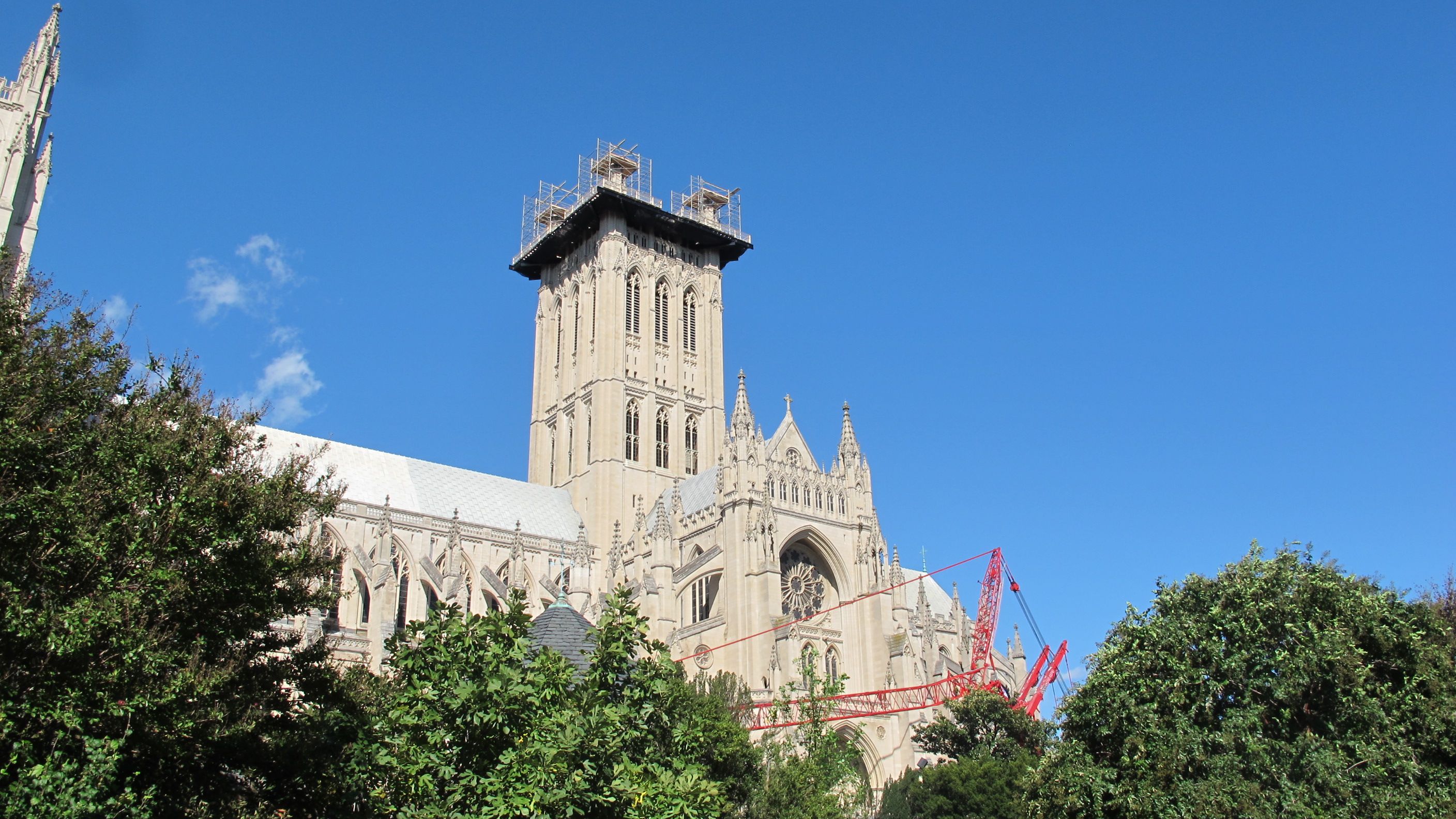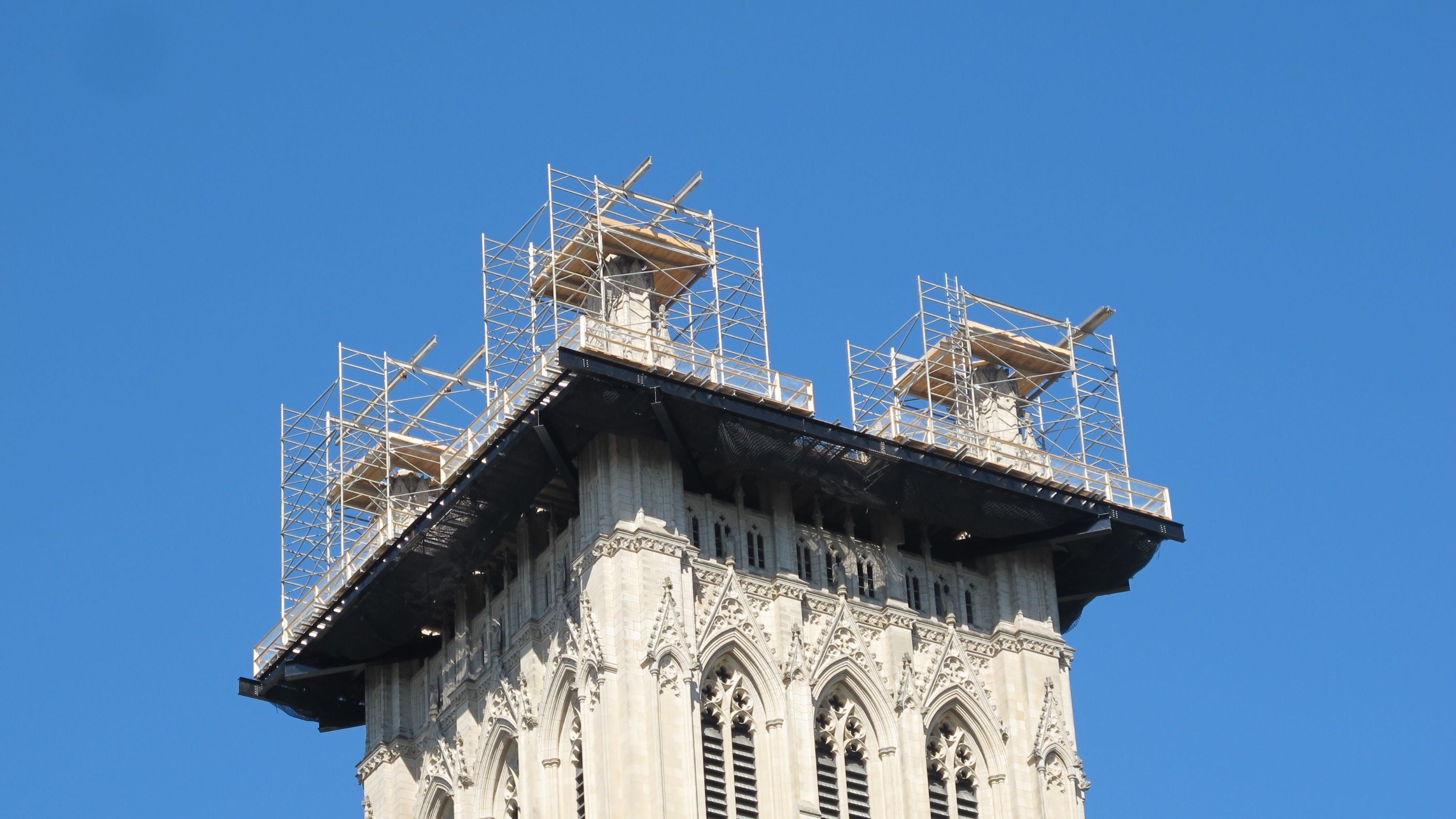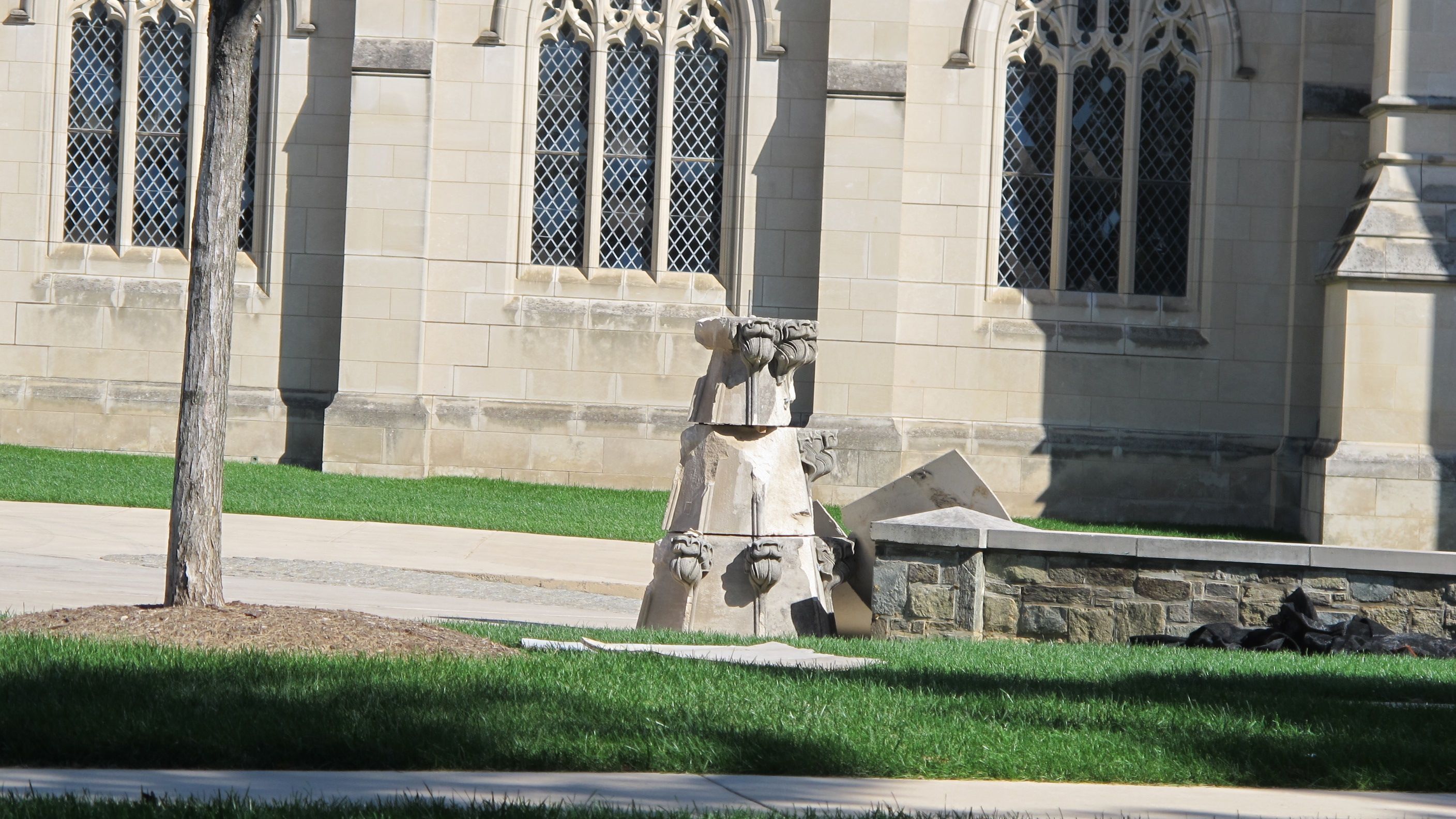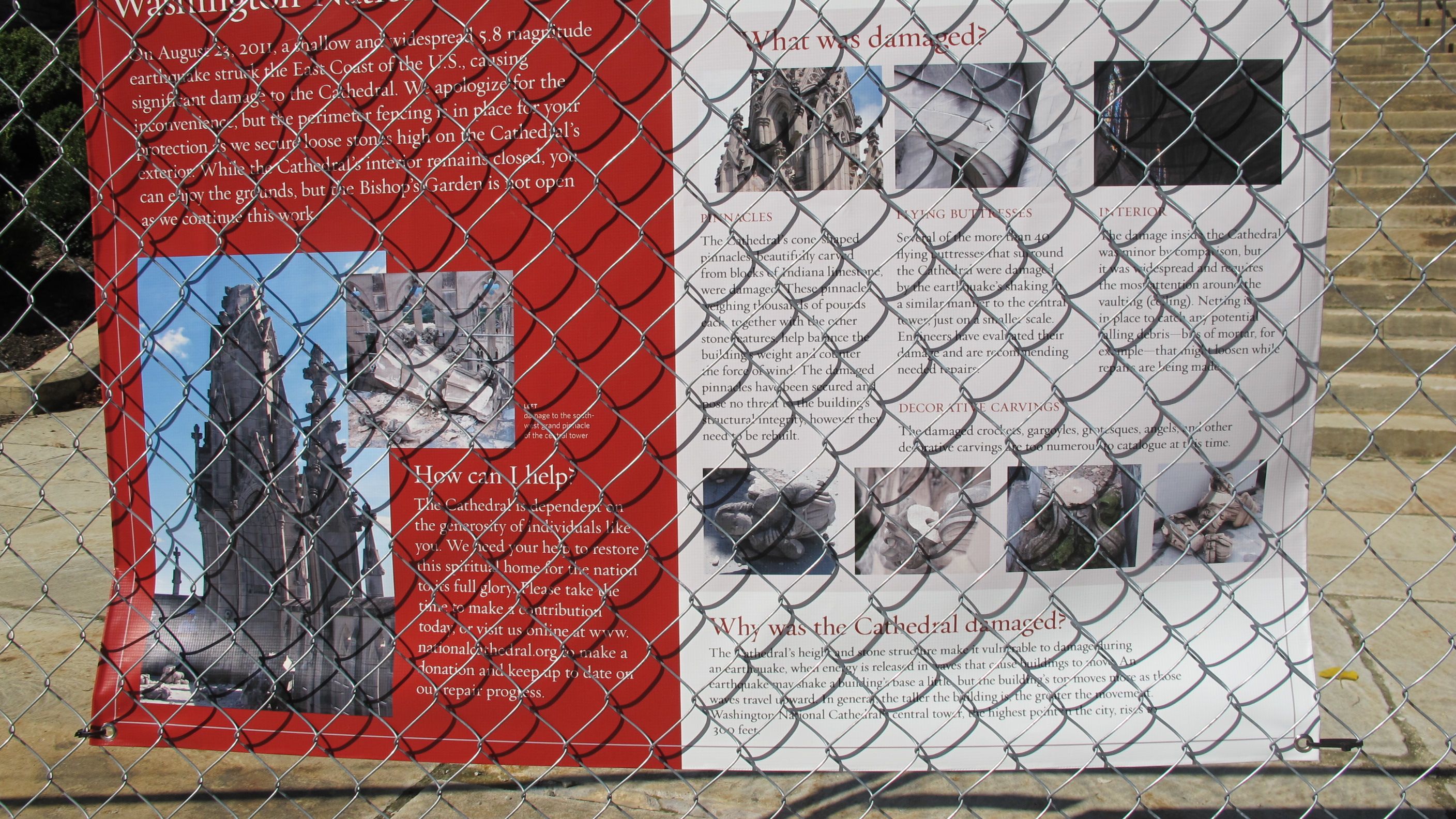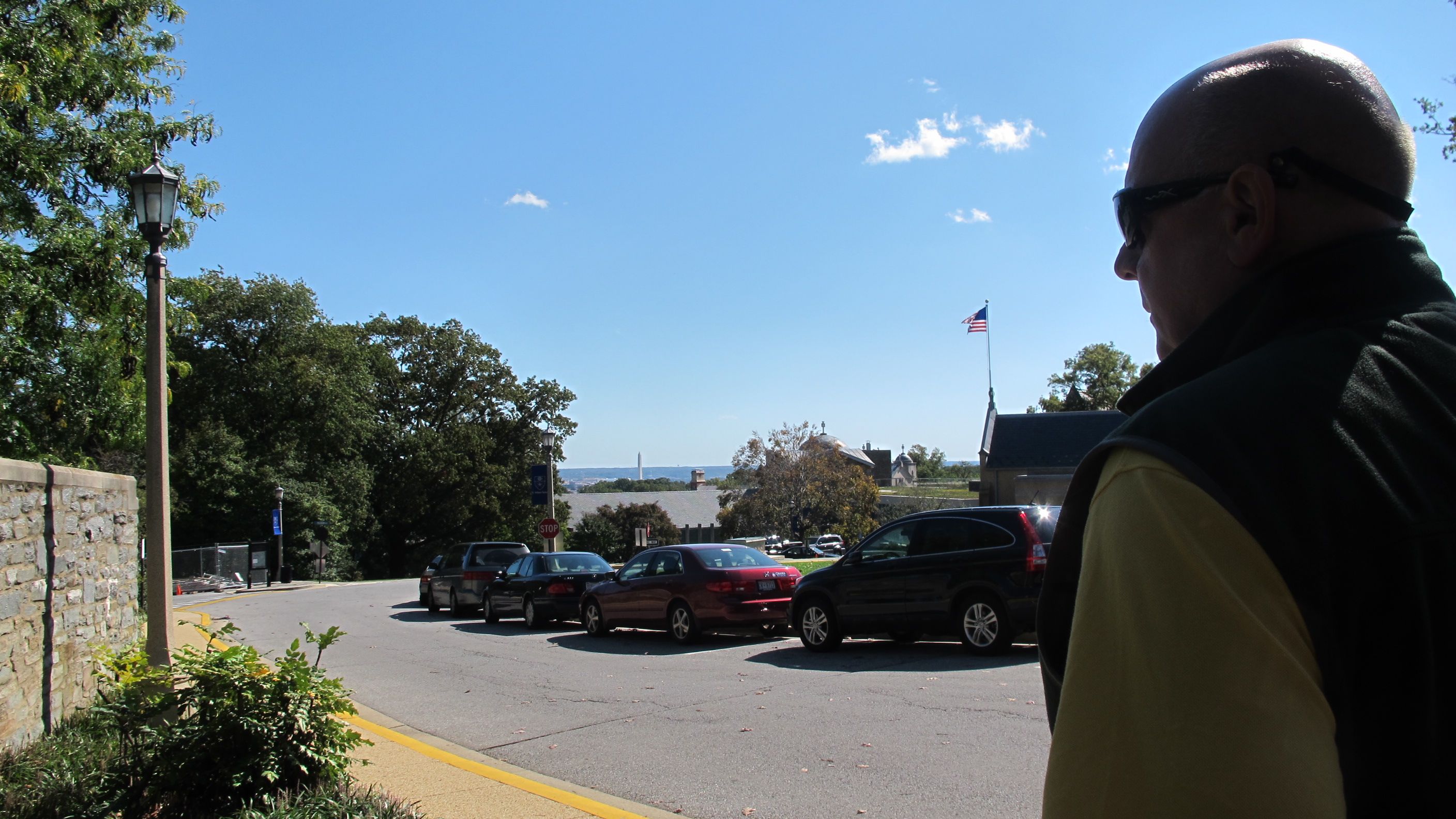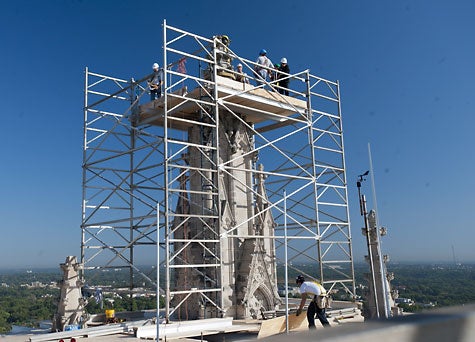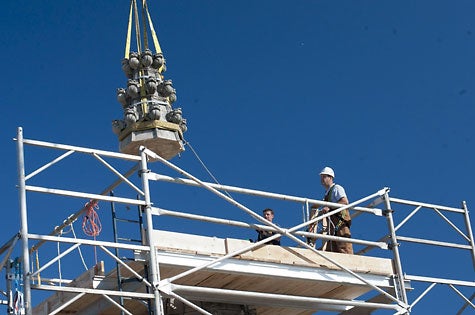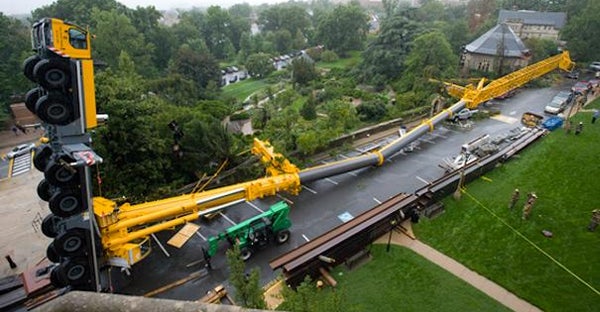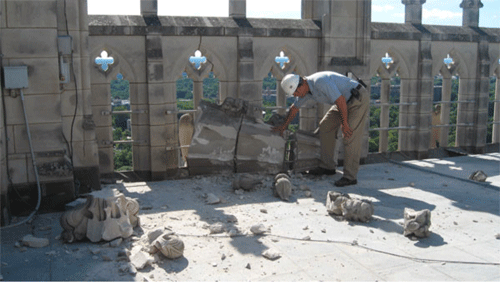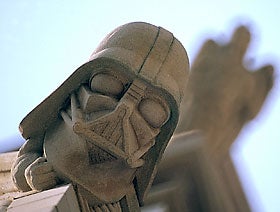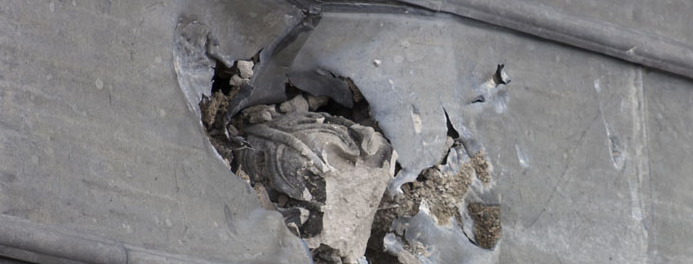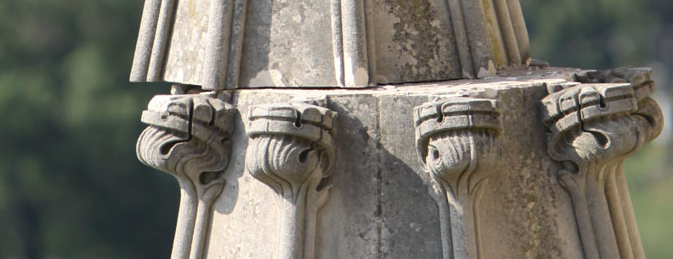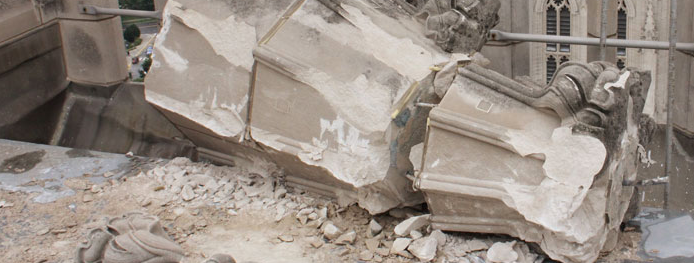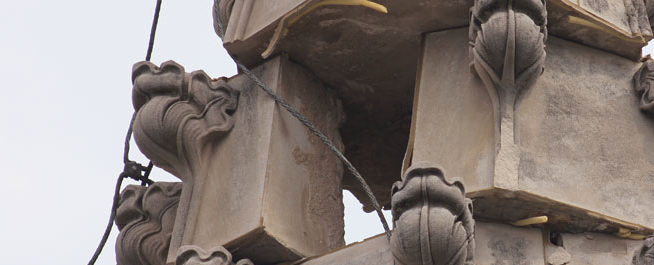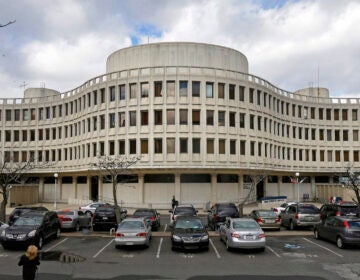The massive rebuild at the National Cathedral
As a fifth-generation Washingtonian – born A.D. 1953, I was around for quite a bit of the construction of the Washington National Cathedral, which sits formidably on one of the highest spots in the District of Columbia, Mount Saint Alban.
While the first stone was laid in 1908, quite a bit occurred after my arrival on the good earth.
For instance:
- In 1976, the Cathedral’s nave and west rose window were completed and dedicated in the presence of Queen Elizabeth II and President Gerald Ford.
- In 1982 – the Pilgrim Observation Gallery was completed and opened to the public.
- In 1983, the final phase of construction began with the setting of the first stone for the west towers.
- And in 1990, The completion of the west towers marked the end of 83 years of construction.
Now, thanks to a recent and rare East Coat earthquake, I have been witness to some significant and daunting cathedral deconstruction.
The August temblor shook and displaced the decorative spires on the cathedral’s central tower, sending one crashing to the lawn facing Wisconsin Avenue. Gargoyles and other decorative carvings – Darth Vader survived – were also damaged.
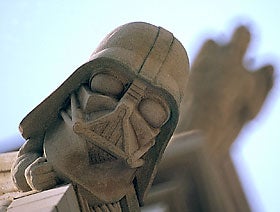
Interior mortar cracked and fell and some of the huge structurally significant flying butresses were cracked.
On a weekend visit to the ground in mid October, PlanPhilly spoke to Cathedral staff who told us the stabilization work now and the reconstruction over the next 10 years really has not been cost out but they wouldn’t be surprised if it reached $100 million. This comes at a time when the Cathedral is under tremendous fiscal pressure: staff has been laid off, the wonderful greenhouse has been closed and a crane that was part of the stabilizing effort in September toppled and knocked the roof off the Herb Cottage gift shop.
It should be noted that the Cathedral, which looks like it has been around 500 years but is just over 100, is the sixth largest cathedral in the world and is built of Indiana limestone in the form of a solid masonry structure. The limestone blocks are laid one on top of the other, with mortar between them. The flying buttresses are also solid stone, and they help hold up the walls by bracing them. The roof is held up by a steel beam structure, but does not help hold up the rest of the Cathedral. The reconstruction of the spires will involve inserting multiple stainless steel rods into holes that will be drilled through each spire. Presently, only the spires at the front of the cathedral are supported by five steel rods.
If you want to donate to the Cathedral rebuild go here.
And here are some things you might not know about the longest-running construction project in Washington, D.C., history:
• The first tract of land for the Cathedral site (30 acres) was purchased in 1898 for $245,000. Two other parcels of land were purchased later, bringing the total cost to $291,427 and the total area to 57 acres.
• The total cost of building the Cathedral was $65 million, all of which was raised through private donations.
• The Cathedral weighs 150,000 tons.
• 288 angels adorn the two west towers.
• The north rose window is the Cathedral’s largest stained glass window at 26 feet in diameter.
• The central tower is 676 feet above sea level, making its top the highest point in the District of Columbia.
• The largest of the 53 bells of the carillon weighs 24,000 pounds and measures eight feet, eight inches in diameter.
• There are 110 gargoyles on the Cathedral.
• There are 215 stained glass windows in the Cathedral.
• More than 10,500 pieces of stained glass make up the west rose window.
• There are more than 1,500 separate pieces of needlepoint in the Cathedral.
• There are 10,650 pipes in the Great Organ.
• More than 220 people are interred in the Cathedral, including Woodrow Wilson and Helen Keller.
Contact the reporter at mgolas@design.upenn.edu
WHYY is your source for fact-based, in-depth journalism and information. As a nonprofit organization, we rely on financial support from readers like you. Please give today.



